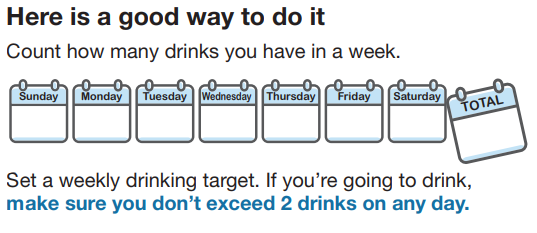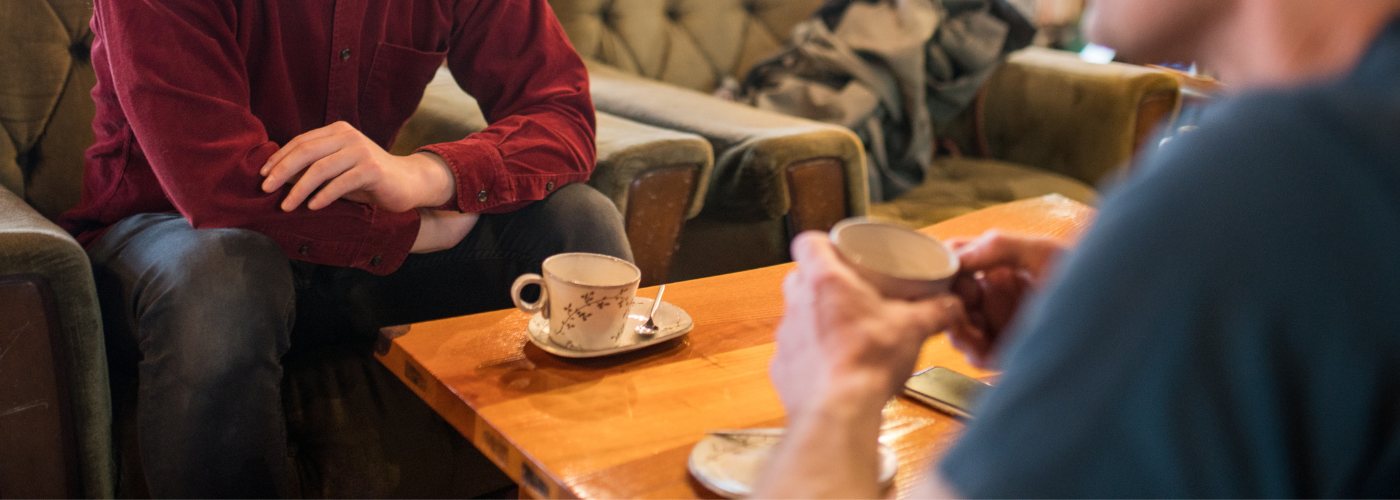Reducing your alcohol intake
How to reduce your alcohol intake
Aim to drink less. Drinking less benefits you and others. Any amount you drink less reduces your risk of injury and violence as well as many health harms.

Source: Drinking less is better infographic – ccsa.ca.
You can reduce your drinking in steps! Every drink counts.
Find out how much alcohol is in your drink and see where you fit on the continuum of risk.
Seven things you can do to drink less alcohol
The more you drink, the greater your risk of diseases, including some cancers. Reducing how much alcohol you drink doesn’t mean you have to stop socializing with friends. Here are the top seven things you can do to drink less for your health:
- Turn down the offer of a drink you don’t want. Sometimes peer pressure can cause people to drink more. However, if you don’t want another drink, it’s okay to turn it down. You can always have a non-alcoholic one instead.
- Switch between alcoholic and non-alcoholic drinks. Take a break and have a non-alcoholic beverage, or glass of water. This way, you are also rehydrating between alcoholic drinks, especially if you choose water. And you can still have a glass in your hand in case you feel awkward without one.
- Stick to low-alcohol drinks. Look at the labels or ask bar-staff about the alcoholic content of drinks. Consider choosing, for example, a lower-strength beer with 4-5 per cent alcohol rather than a stronger 6-8 per cent one.
- Count your drinks. Take a look at the drinking guidelines and try to track how much you drink.
- Eat food while drinking. Take advantage of bar snacks, like nuts, or order something to nibble on while drinking.
- Ease your thirst with a non-alcoholic drink before drinking. Instead of drinking while thirsty, first have a glass of water or other non-alcoholic drink. Then you can sip your alcoholic drink instead of drinking it quickly because you are thirsty. Often, drinking too quickly can make you drink more.
- Limit how many drinks you have. Make a plan and stick to it. For example, “Tonight, I’m going to have no more than two beers.”
Learn how to reduce your drinking and have more alcohol-free days
Why have more alcohol-free days?
Many experts recommend taking one or more days off from drinking completely each week. If you wish to cut down the amount you drink, a good way to help achieve this is to have several alcohol-free days each week.
On top of the more general benefits of drinking less, there are some very good reasons why alcohol-free days are good for your health:
Drinking every day can become a habit. By having alcohol-free days, you could lower your risk of making drinking alcohol a habit and developing alcohol-related diseases. Taking alcohol-free days can also lead to a real sense of achievement.
Drinking every day, even if you don’t drink a lot, can damage your liver.
How to have more alcohol-free days
Here are some things you can do to make having alcohol-free days easier:
- Try different non-alcoholic cocktails when you are socializing to find ones you like. Look up recipes to make your own. Try lower-calorie options mixed with unsweetened tea or sparkling water. Keep them in the fridge so you always have them on hand.
- Challenge friends, family, and workmates to join you on an alcohol-free day. Campaigns like “Dry January” are partly so successful because friends challenge each other to take part. Or at least tell them what you are doing so they can support and motivate you.
- Offer to be the designated driver. You can avoid drinking and still be with friends.
- Skip the liquor store when doing your shopping. If you don’t always have drinks in the house, you’ll find it easier to have alcohol-free days.
- Build alcohol-free days into your weekly or monthly schedule. You could time them with other events, for example, have an alcohol-free day every day you go to the gym or workout, to feel extra healthy.
- Try to break habits that could lead to drinking. For example, if you find you always have a glass of wine when watching TV, try to watch less TV. Or replace the wine with a non-alcoholic cocktail or another drink.
- Consider why you drink. If you know when and where you usually drink, you might find it easier to break the habit and have more alcohol-free days. For example, do you really enjoy that drink with your meal at home, or has it just become a habit?
- Take it slow. You could try starting with one or two alcohol-free days a month and taking it from there.
- Reward yourself. Research shows people who take alcohol-free days often feel a sense of achievement. Why not treat yourself with the money you save on drinks?
- Don’t make up for alcohol-free days at other times. Having alcohol-free days can benefit your health in many ways. However, it’s important not to increase how much alcohol you have on the days you do drink.
Why do people drink?
Thinking about when, where, and why you drink—as well as how much you drink—can help you understand how alcohol may be affecting your health. Better understanding your relationship with alcohol can also help you reduce how much you drink.
Want to learn more about alcohol and health? Visit our main alcohol page at www.swpublichealth.ca/alcohol.











